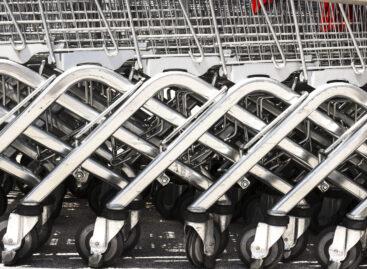Magazine: Wining and dining ten years from now

Dr. Ákos Kozák
futurologist, socialogist
Earlier I already told on the pages of this magazine that by 2030 there will be approximately 110 megapolises on planet Earth, each with a population bigger than 5 million. From the 8 biggest megapolises of the future one will be in America (Mexico), one in Africa (Cairo) and the rest will be on the Asian continent. This is important because big cities will set the food and cooking trends. According to a global GfK survey, women in India spend 13 hours per week with cooking, while in South Korea this time is just 3 hours. One would think that this depends on how developed the given country is, but something different must be the influencing factor ,as women only spend 5 hours with cooking in Turkey and Brazil too. All in all, we can count on cooking becoming more important in the daily lives of people in the future.
Today, when we estimate that the planet’s population will reach 9.5 billion by 2050, the big question is how we are going to feed this many people? Luckily for us, constantly developing food and biotechnology can solve this problem. It is enough the mention one of the latest trends, the production of artificial foods. As a matter of fact, this idea was already raised by 18th-century mathematician and philosopher, Nicolas de Condorcet around 1795. One thing is very important, though: Technological development must come with a growing willingness by consumers to accept new things when it comes to eating. Making progress in the manufacturing of food won’t be enough. It is rather sure that the culture of eating will need to change significantly.
It has become nearly certain by now that meat production can’t continue as it was. We must get used to new production technologies and foods. New Agriculture, food production methods utilising the latest technological solutions can contribute to this process. These days agricultural production can be done without human labour, just by robots, computers and drones – in theory at least. A good trial for this was the Hands Free Hectare project of Harper Adams University. Probably the biggest breakthrough can be the expansion of vertical agricultural ecosystems and the spreading of super-intensive urban production processes. //
Related news
Price isn’t enough, promotions and re(in)novation are lifting the plane
🎧 Hallgasd a cikket: Lejátszás Szünet Folytatás Leállítás Nyelv: Auto…
Read more >What makes a good advertisement today?
🎧 Hallgasd a cikket: Lejátszás Szünet Folytatás Leállítás Nyelv: Auto…
Read more >Danish example in Hungary: sustainable food requires a common strategy
🎧 Hallgasd a cikket: Lejátszás Szünet Folytatás Leállítás Nyelv: Auto…
Read more >Related news
The HORECA sector joins forces with Alimentaria+Hostelco to mark the future of hospitality
🎧 Hallgasd a cikket: Lejátszás Szünet Folytatás Leállítás Nyelv: Auto…
Read more >Challenges of the retail sector: retail has become more crisis-resistant
🎧 Hallgasd a cikket: Lejátszás Szünet Folytatás Leállítás Nyelv: Auto…
Read more >How to avoid the hassles of online shopping?
🎧 Hallgasd a cikket: Lejátszás Szünet Folytatás Leállítás Nyelv: Auto…
Read more >






